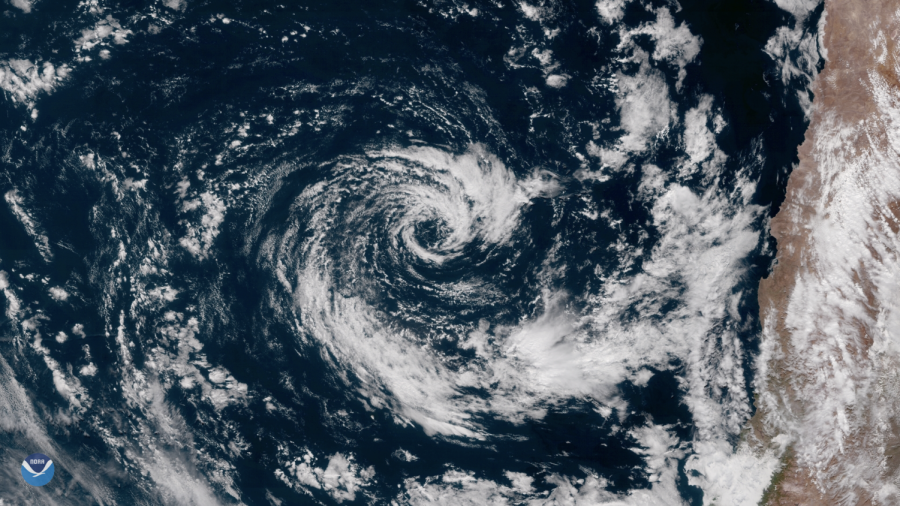Current weather yields obscure results
Snow, sleet, hail, rain and thunder are well-known to Pennsylvanians. Winter weather is all about snowmen and heavy coats. Summer weather is all about humidity, shorts and vacations. All seasons have different types of weather that correspond with them. Many seasons have weather phenomenons that are a bit wacky.
In this case, wacky weather is defined as weather phenomenons that are abnormal and in some cases appear more than once.
“My favorite weather is probably when you have particles coming from the sun and they interact with the poles and it ionizes the entire atmosphere,” Physics teacher Brian Wargo said.
Wargo was describing a time 10 years ago when the Northern Lights reached down to Pennsylvania. On Feb. 26, there was an optical illusion in Collier Township, PA that was similar to that of the Northern Lights.
The illusion, similar to the illusion of a rainbow, was a pillar of light in the sky. As meteorologist Ron Smiley explained in his article, the pillar was the result of the sun’s light reflecting off of the moon. That reflection then entered the atmosphere where it was twisted by ice crystals.
That morning’s conditions were considered to be perfect for this phenomenon. Those conditions included high pressure and a jet stream dividing frigid air from the north and milder air to the south.
In New Mexico, on Feb. 12, a tornado made of snow was witnessed. The day had temperatures of around thirty degrees and heavy snow showers.
Typical tornadoes need to have lift and rotation in order to form. Freezing temperatures or near-freezing temperatures create a stable atmosphere, which prevents tornadoes from forming.
The tornado was a landspout — formed from the ground up instead of descending from clouds — and, as shown by data and statements from witnesses, the tornado was probably partly mechanic. That means that its formation occurred partially because of surface influences.
Moving over to Europe, there is an event that occurs about once every half-decade: orange snow. Last year in March, dust from the Sahara desert covered snow in Bulgaria, Moldova, Romania, Russia and Ukraine. The concentrations of dust were reported to be higher than normal, as the BBC wrote.
The dust was carried to those eastern European countries in addition to Crete, due to a low-pressure system. The winds were able to carry the African dust into the Mediterranean and over to Greece’s largest island Crete, which is a distance of around 225 miles. The dust has gone as far as traveling more than four thousand miles to the southern U.S.
In May of 2018, a rare storm started to brew in Chile. The storm was formed hundreds of miles west of Chile’s coast. As weather.com mentions, the area is “typically one of the world’s most tropical cyclone devoid ocean basins.”
“Unfortunately, all of our weather is going to become more and more odd as the climate is changing. We will see all kinds of anomalies regularly occurring. We’ll have more snow events, more fires, we will have all kinds of problems like that,” Wargo said.
Weather is the most unpredictable force of nature and sometimes nature creates something new or strange. Without Mother Nature, the world would lack the interesting features that made it different from other planets.



